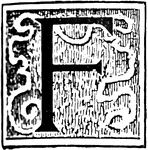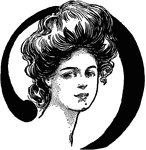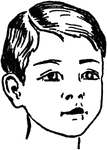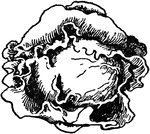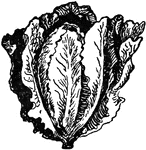
Decorative Floral E
An ornate capital E surrounded by leaves and vines, used at the start of a new chapter or heading.
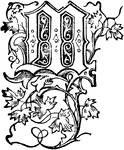
Decorative Floral M
An ornate capital M surrounded by leaves and vines, used at the start of a new chapter or heading.

Decorative Floral A
An ornate capital A surrounded by leaves and vines, used at the start of a new chapter or heading.

Decorative Floral D
An ornate capital D surrounded by leaves and vines, used at the start of a new chapter or heading.

Decorative Floral I
An ornate capital I surrounded by leaves and vines, used at the start of a new chapter or heading.

Decorative Floral T
An ornate capital T surrounded by leaves and vines, used at the start of a new chapter or heading.

Decorative Floral B
An ornate capital B surrounded by leaves and vines, used at the start of a new chapter or heading.
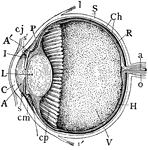
Median Vertical Anteroposterior Section of Eye
"Human Eye, in Median Vertical Anteroposterior Section. (Ciliary processes shown, through not all lying…
Anterior View of Human Right Femur
"Anterior View of Human Right Femur. ec, external condyle; etu, external tuberosity; ic, internal condyle;…

Posterior View of Left Femur of Horse
"Posterior View of Left Femur of a Horse. h, head; gtr, great trochanter; ttr, third trochanter; ltr,…

Feloher from Nineveh
"One of an order of beings, the life-principles or geniuses or tutelary spirits of living beings, believed…
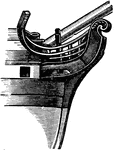
Fiddle Head
"Naut., an ornament at the bow of a ship, over the cutwater, consisting of carved work in the form of…
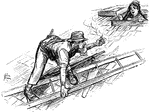
Man and Woman on Roof
An illustration of a man replacing shingles on a roof while he talks to a woman stick her head out of…

Figurehead of Ship
"An ornamental figure, as a statue or bust, on the projecting part of the head of a ship, over the cutwater…

Types of Files
"Files. a, cotter-file when large, and verge- or pivot-file when small; b, square file (parallel or…

Common Eastern Firefly
"Common Firefly (Photinus pyralis). a, larva; b, pupa in its earthen cell; c, beetle. d, e, f, leg,…
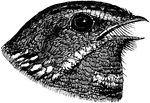
Fissirostral Bill of Nightjar
"In ornithology, having the beak broad and deeply cleft, as a swallow, swift, or goatsucker" or nightjar.…

Sarracenia Flesh Fly
"Sarracenia Flesh-fly (Sarcophaga sarraceniae). a, larva; b, pupa; c, fly; d, head and prothoracic joints…
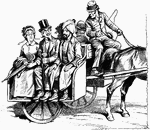
Jaunting Car
An illustration of a jaunting car; The Irish form of the sprung cart, called a jaunting car or jaunty…

Soldier with Mace
An illustration of a soldier leaning on a mace. A mace is a simple weapon that uses a heavy head on…
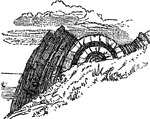
Anticlinal Fold
A symmetrical anticlinal fold, the top of which has been eroded. Near St. Abb's Head, Scotland.

First Cycle of Erosion
A coastal plain in the first cycle of erosion. The presence of two hard layers produces a terraced cuesta…

Hog-back Diagram
Hog-backs (RR) changing into cuestas (CC) and these into steps (HH) by progressive flattening of strata;…

Cliffs of Normandy
Work of the waves in cutting away rocky coasts. Cliffs of Normandy; the coast has been cut back so far…

Francisca, Throwing Axe
"A battle-ax used by the Franks, of which the typical form is a head long in proportion to its width,…
Gaine of Renaissance Sculpture
"Gaine. Renaissance sculpture. Maison de Pierre, Toulouse, France. In sculpture, the lower part of a…
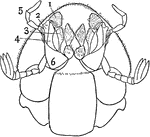
Ventral View of Dung Beetle
"Under Surface of Head of Tumble-bug (Copris carolina), about four times natural size. 1, galea; 2,…
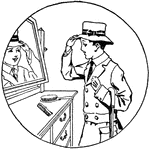
Boy Trying on Hat and Looking at His Reflection
An illustration of a boy trying on a hat and looking at his reflection in the mirror.
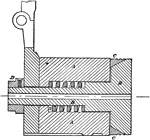
Freire Gas Check
"A device for preventing the escape of gas through the vent or around the breech-mechanism which closes…
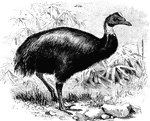
One-wattled Cassowary
One-wattled Cassowary "...Casuarius uniappendiculatus, of Salawatti and the adjoining parts of New Guinea,…

Kiwi
Kiwi, Apteryx australis, of the South Island, is lighter (than the Apteryx mantelli of North Island),…

Great Northern Diver
The Great Northern Diver, Colymbus glacialis, "...is black above, with belts of white spots making a…

Abbey of Allerheiligen
Abbey of Allerheiligen, or All Saints, this abbey is beautifully situated on the banks of the Lierbach,…
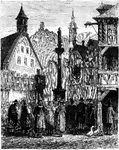
Simonswald
Archaeological artifacts show that Simonswald was home to farmers as early as 6000 to 3000 BC. Roman…

Common Heron
"The most typical forms of Ardea (Common Heron) are large slaty-coloured birds, varied by black, rufous,…
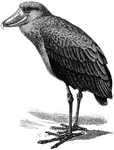
Shoebill
"Balaeniceps rex, the Shoebill, of the White Nile, has a short crest, and is brownish-grey with blackish…

Hammerhead Standing Near Water
"Scopus umbretta, the Hammerhead, of Madagascar and a large part of the Ethiopian Range, is purplish-brown,…
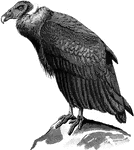
Condor
"On the Sarcorhamphus gryphus the Condor, the head and neck are bare, with dull red skin, wrinkled in…

Secretary Bird
"Standing some four feet high on very long legs, this bird (Secretary Bird) gives the impression of…
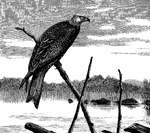
Red Kite Resting on a Branch by a Body of Water
"Milvus milvus, the Red Kite or Forked Tail Glead of the Old World, ranging from the Atlantic Islands-except,…
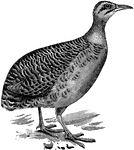
Red-winged Tinamou
"Rhynchotus rufescens,... is grey-brown, with blacker crown, rufous cheeks, neck, and breast, and chestnut…

Pheasant
"Phasianus colchicus, Pheasant, ...has a white collar and slaty lower back with dark green barring;…
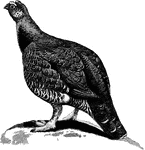
Red Grouse
"Lagopus scoticus, the Red Grouse or Muirfowl, the only bird entirely confined to our islands, differs…

Land-Rail
The Crex pratensis, Land-Rail, or Cork Crake, is mostly brown with the upper parts spotted, a blue-green…

Trumpeter
"Psophia crepitans, the Agami, ranging from British Guiana to Amazonia, is a black bird with velvety…
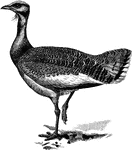
Great Bustard
"The Otis Tarda, the Great Bustard, which, as a native only became extinct in Norfolk about 1838, used…

Sun-Bittern
"Eurypyga helias, Sun-Bittern, has a black head, with a white stripe above and under each eye, and a…

Indian Jacana
"Hydrophasianus chirurgus, the Indian Jacana, of most of the Indian Region, is Bronzy-brown above and…
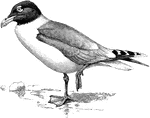
Great Black-Headed Gull
"Larus ichthyaetus, the Great Black-headed Gull, ranging from the Black Sea and the Levant to Tibet,…
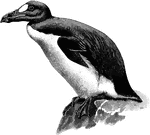
Great Auk
"This species (Alca impennis or Great Auk), extirpated chiefly by the persecution of fisherman, but…
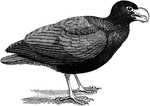
Tooth-Billed Pigeon
Didunculus strigirostris, the Manu-mea or Red Bird of the islands of Upolu, Salvai, and Tutuila in Samoan…
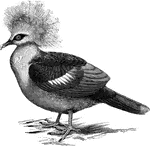
Crowned Pigeon
"Goura coronata, the Crowned Pigeon, discovered by Dampier in 1699, is bluish-slate -coloured, with…
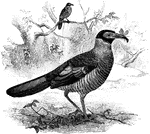
Two Radiated Ground Cuckoo, One with an Insect in its Mouth, the Other in a Tree Branch in a wooded Area
"The plumage is brownish, with white margins to the feathers and a purple tinge on the rufous-mottled…
